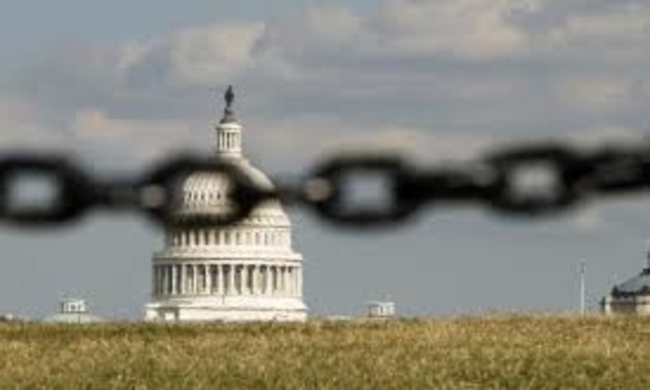An earlier version of his column appeared in The Hill on February 6, 2018.
Once again, this year we were threatened with a federal government “shutdown.”
Well, for the future this citizen out in the hinterland says, “Bring it on!”
Most of the interrupted functions aren’t really constitutional anyway, and we could do well without them. In fact, we should defund some of them permanently to help close the federal deficit. Most of the affected workers wouldn’t be out of work for long: Right now the private sector is desperate to use more efficiently the kind of skilled people now employed, and sometimes ineptly utilized, by the federal government.
I put the word “shutdown” in quotation marks because it is really a misnomer. Labeling it as such has been a huge rhetorical coup by apologists for unbridled federal power. In fact, it’s just a temporary pause in the otherwise-inexorable growth of federal spending.
Sometimes this pause occurs because members of Congress can’t agree how much to increase expenditures. (They rarely propose reducing them.) Sometimes it happens because they can’t agree on raising the debt limit. The D.C. crowd considers not raising the debt limit particularly disastrous because it actually forces the federal government to balance its budget in the interim.
Now, let’s look at the agencies whose operations may be interrupted in event of a “shutdown.” The list comes courtesy of thebalance.com. Keep in mind, however, that the list is misleading because funding for some of their major operations is on statutory auto-pilot — “mandatory spending,” which is D.C.-speak for “we let it continue without renewing it annually.”
For example, even though the Department of Health and Human Services is on the list below, during a “shutdown” it will continue to cut checks for Social Security and for most of ObamaCare.
So, with that caveat in mind, let’s review the list of agencies that may suffer partial closure:
- Commerce Department, except the National Oceanic and Atmospheric Administration.
- Department of Education.
- Department of Energy (except certain safety functions remain open).
- Environmental Protection Agency.
- Food and Drug Administration.
- Department of Health and Human Services.
- Department of Housing and Urban Development.
- Department of the Interior (although the Department will not be shutting down the national parks this time).
- The Internal Revenue Service, except those processing tax returns.
- The Department of Labor, including Bureau of Labor Statistics.
- NASA.
- The National Institute of Health.
- The Smithsonian.
Retrieve your pocket Constitution. Look through it and identify those functions the Constitution actually authorizes. Then go over the list of “shutdown” agencies again.
The Constitution empowers the federal government to regulate commerce, which encompasses many functions of the Commerce Department and the Food and Drug Administration. The Constitution also authorizes national defense (including, in part, NASA), and administration of the District of Columbia (including, by implication, the Smithsonian).
But otherwise you won’t find much overlap between what the Constitution authorizes and what a shutdown would interrupt. The Constitution contains not a single word about regulating or funding urban development, education, or labor. But it does contain the Ninth and Tenth Amendments, which reserve such matters to the states and the people.
Some agencies subject to closure already are duplicated, or can be duplicated, by the private sector or by interstate compact, rendering federal involvement unnecessary. Others are operations state governments could handle easily.
For example, during the 2013 shutdown, the Department of the Interior announced it was closing Rocky Mountain National Park in Colorado. No problem: Colorado state government kicked in the money necessary to keep the park open, and it stayed open. A few Coloradans began to ask, “Who needs the feds to run the park after all?”
That kind of question is the real threat of a prolonged government shutdown. It is a threat to federal politicians, functionaries, grant recipients, and the complicit segment of the mass media: Americans might come to realize they can get along very nicely without much of the federal bureaucracy. The ease with which Colorado funded Rocky Mountain National Park is a case in point. In fact, it may be the reason the federal government will not be closing the parks this time.
If, unlike me, you really are worried about a government shutdown, then be assured: Congress will not allow it to continue for too long. Otherwise, Americans might discover just how disposable most federal agencies are.








